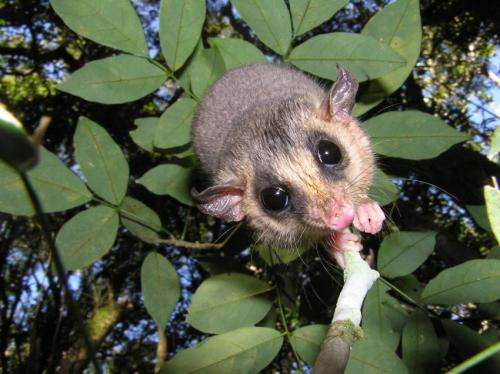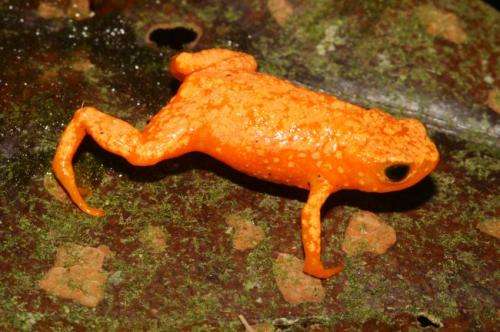Less than $200 million would conserve Atlantic Forest in Brazil, researchers find

Brazil could conserve its valuable Atlantic Forest by investing just 0.01 per cent of its annual GDP, according to a new study.
The Atlantic Forest (Mata Atlântica) is one of the most important and threatened biodiversity hotspots in the world, containing the only living examples of nearly 10,000 species of plant and more bird species than all of Europe.
Situated along the Atlantic coast of Brazil, it once covered an area of nearly 1.5 million square kilometres. Today, the forest is home to more than 130 million people and it covers only 160,000 km2, because of deforestation.
Reporting in the journal Science, a team of international scientists have calculated that it would cost US$198 million per year to pay private owners to set aside land for reforestation.
Together with the conservation of existing tracts, this would be enough to conserve the majority of species and many of the benefits that come from the forest's ecosystem, such as pest control and pollination.
US$198m is equivalent to only 6.5 per cent of what Brazil already invests in agricultural subsidies and less than 0.01 per cent of the country's annual GDP.
There are already some schemes in Brazil to pay private land owners to set aside land to conserve the forest, preserve species and maintain healthy ecosystems, but these have been local-scale initiatives that have had little impact on maintaining and improving the conditions of the forest as a whole.
Lead researcher Dr Cristina Banks-Leite, from the Department of Life Sciences at Imperial College London, said: "The Atlantic Forest is smaller and far more degraded than the Amazon rainforest, but it is also contains a vast range of biological diversity. The forest is a crucial habitat that is home to more than half of Brazil's threatened animal species. At the moment, outside of protected areas, nearly 90 per cent of the Atlantic Forest has less than 30 per cent of forest cover remaining. This is quite simply not enough to ensure the survival of species and maintenance of a thriving ecosystem across rural areas".

"Our study shows that it would be relatively cheap to secure the future of the forest - and protect its plants, birds and other animals – by paying land owners on a large scale to set aside land for conservation. Local communities and land-owners will benefit not only from regular payments but also from the benefits that a flourishing ecosystem brings. We need to start to put such a scheme in place now, before it becomes too late."
In this new study scientists calculated how much it would cost to set aside land in priority landscapes across the whole Atlantic Forest in order to restore the minimum amount of habitat needed to conserve biodiversity and maintain ecosystem functions. Their findings reveal:
- At least 30 per cent of native habitat needs to be preserved to maintain current levels of biodiversity
- It would cost US$198 million per year, for the first three years, to set aside and reforest enough land to a minimum of 30 per cent forest cover.
- This is the equivalent of 0.0092 per cent of Brazil's annual GDP, a figure that would reduce to 0.0026 per cent once active restoration costs are no longer needed.
To calculate costs the researchers first had to record what and how many species are currently living in pristine and degraded areas of the Atlantic Forest.
Over a period of nine years, a team of more than 100 researchers led by Dr. Renata Pardini, Dr. Marianna Dixo and Prof. Jean Paul Metzger from the University of São Paulo, collected data on birds, mammals and amphibians living in the forest. Using mist nets to capture birds as well as pitfall traps to capture mammals and amphibians, they painstakingly recorded information on 25,000 individuals, made up of 140 species of birds, 43 species of mammals and 29 species of amphibians.
They collected data in 79 different forest regions across 150 kilometres and estimated that to maintain a similar level of biodiversity and ecosystem functions which are found in protected areas, such as national parks, a minimum of 30 per cent of native habitat needs to be preserved.
To evaluate overall costs of maintaining minimum forest cover the scientists combined current estimates of existing forest cover with average costs paid to private land owners, and found that preserving the forest is feasible and low-cost.
Prof. Jean Paul Metzger from the University of Sao Paulo, another lead author of the study, said: "Our study shows a clear threshold of biodiversity losses with deforestation; below this threshold, not only many species disappear, but the functions they perform in the ecosystem will also decline, many of which are highly beneficial to humans. This threshold is important to identify win-win situations where both agriculture production and biodiversity conservation is optimized. Furthermore, this information can be a practical tool for planning sustainable landscapes, and should be incorporated into different land use policies, such as the Brazilian Forest Code, programs for ecosystems payments or in socio-environmental certification incentives."
The researchers are now hoping to work with local non-governmental organisations (NGOs) and the Brazilian government to implement a set-aside scheme that would be most cost-effective and beneficial to local people.
More information: Banks-Leite, C. et al. "Using ecological thresholds to evaluate the costs and benefits of set asides in biodiversity hotspots" Science, August 2014. www.sciencemag.org/lookup/doi/ … 1126/science.1255768
Journal information: Science
Provided by Imperial College London


















